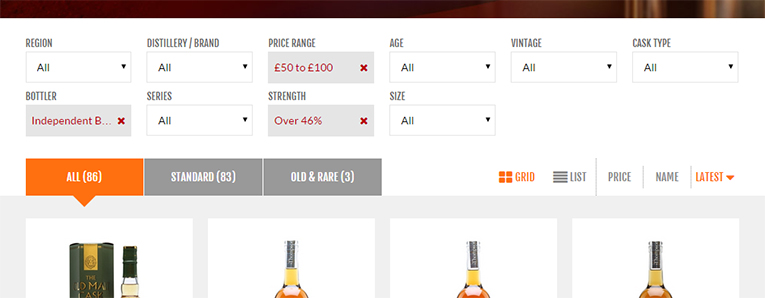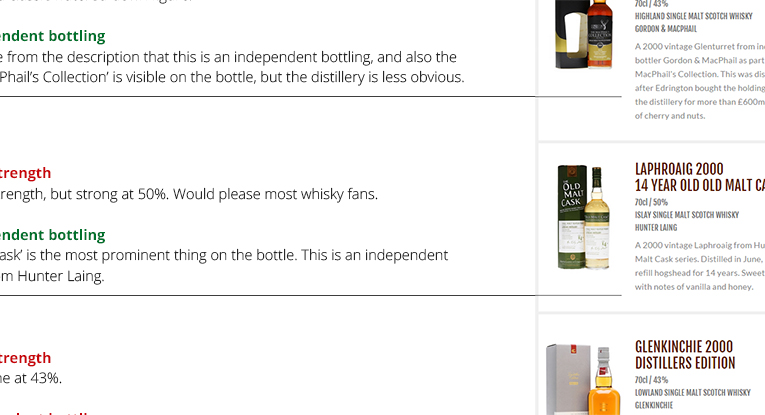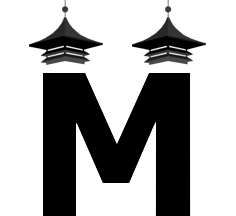One of the problems with getting into whisky is a growing fear amongst your friends and family that they won’t know how to buy whisky for you, yet a gift of something you’re really into has the potential to be a matchwinner.
So, in the spirit of increasing the happiness of whisky fans on birthdays and celebrations, here’s a guide to buying a bottle of whisky that will put you in their good books for months to come:
Step 1: Find out what they like / dislike.
OK this is a really easy start, but take note of some distilleries they’ve mentioned as favourites or particular dislikes. Or just ask them outright. This info is useful ammo when visiting a shop.
Pro Tip: listen out for “I love peaty whiskies” or “I love a good sherry cask” and keep a note.
Step 2: Find a good shop.
Depending on where you live, this might be a physical shop or something online. Generally speaking, a big city will have some decent whisky shops, but they’ll vary in quality. It’s not uncommon for decent wine shops to stock some nice whiskies too.
Pro Tip: Online shops with good reputations include The Whisky Exchange, Master of Malt (these are the biggest two), Royal Mile Whiskies, Whisky Galore, Abbey Whisky, Lockett Bros, Kosher Wines, Nickolls and Perks, Loch Fyne Whiskies, Milroy’s of Soho, Whisky Shop Dufftown, Whisky-Online Shop
Step 3: Go cask strength.
Most standard bottles of whisky have been watered down to 40% / 43% / 46%. ‘Cask strength’ means it’s come straight from the cask with no water being added. This is excellent news for a whisky fan, as it means they’re in control of how they drink it. If you’re in a shop, you can request such a bottle. If you’re shopping online, look for bottles with an ABV of over 50%, and they’ll pretty much always have a decimal place (so 52.0%, not 52%).
Pro Tip: If you ‘re buying an older whisky, the strength can often dip into the 40s so a cask strength bottle can be 44.3%. The decimal place is a handy thing to look out for, but having the words ‘cask strength’ on the bottle is the safest bet!

Step 4: Go independent.
The majority of whisky is sold branded by the distillery (say, Lagavulin 16yo). These ‘official bottles’ are the bulk of single malt sales and are sometimes referred to as ‘OB’. There are plenty of amazing whiskies in this category, but it’ll be easier to impress a whisky fan (and getting something unique) by going off-grid with an independent bottle – a whisky that has been bottled by a company that’s not connected to the distillery. They buy a cask then treat it how they like and bottle it when they think it’s ready, often as cask strength bottlings, helping us tick of Step 3 at the same time.
In a shop: You can now say something like, “I’d like to get a cask-strength, independent bottling of whisky for a friend whose pretty into their whisky. If it helps, these are the distilleries they like and dislike..”
Online: The easiest check that it’s an independent bottle is that the branding of the bottler is normally more prominent than the name of the distillery. Prominent independent bottlers include: Douglas Laing, Signatory, Cadenhead’s.
Pro Tip: Saying the friend is pretty into their whisky is a sensible thing to say whether they are or not. It’s a hint that they should recommend something good to you, not palm you off with something boring.

Step 5: Ask a friend / expert for advice.
This might seem obvious, but it can save a lot of time. If you’re whisky-loving friend has other whisky-loving friends that you know, just ask them to recommend you a bottle – they’ll likely enjoy the experience as well. If you’re in a good shop, the person you’re speaking to is likely a big whisky nut too, so ask them to imagine getting this bottle as a present when they’re suggesting things.
Step 6: Success!
